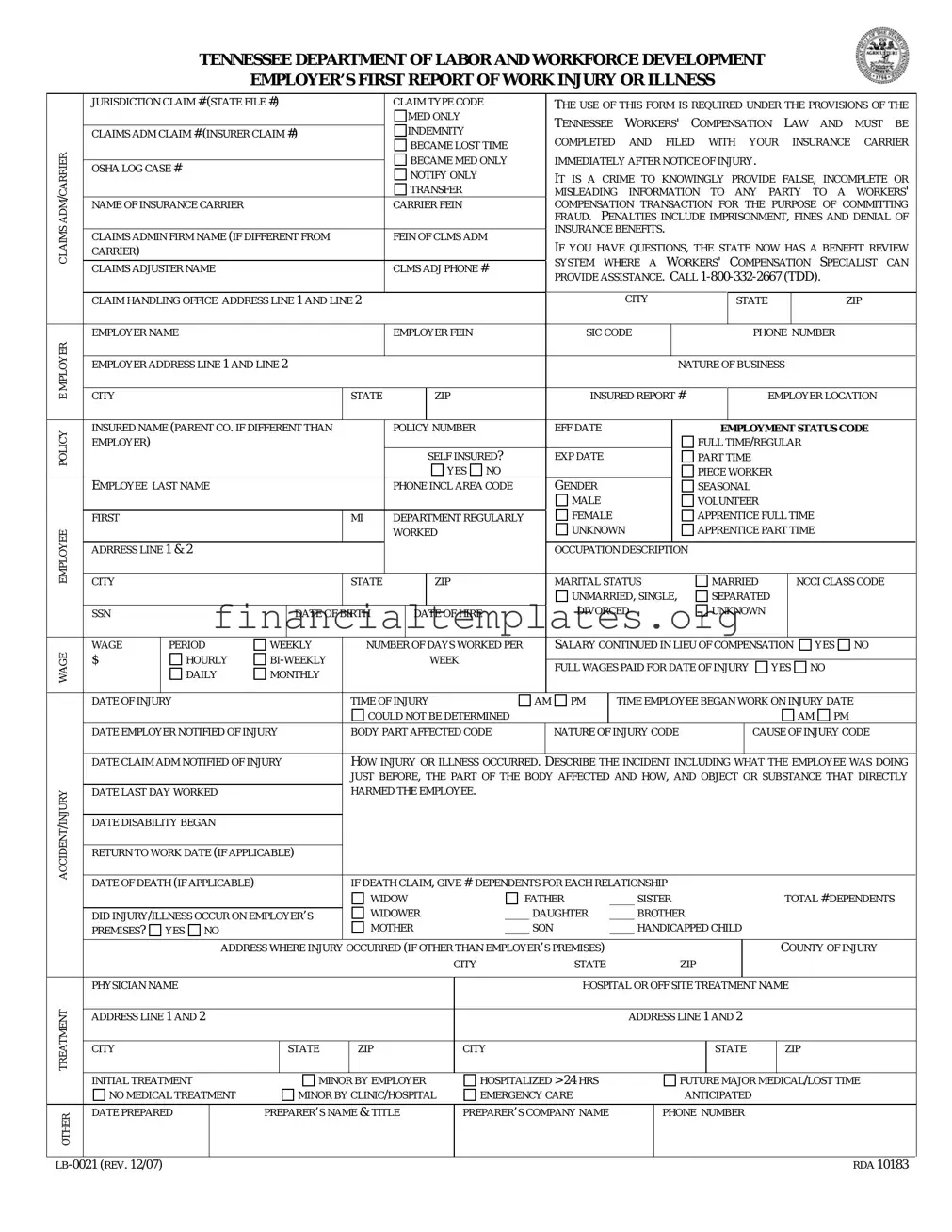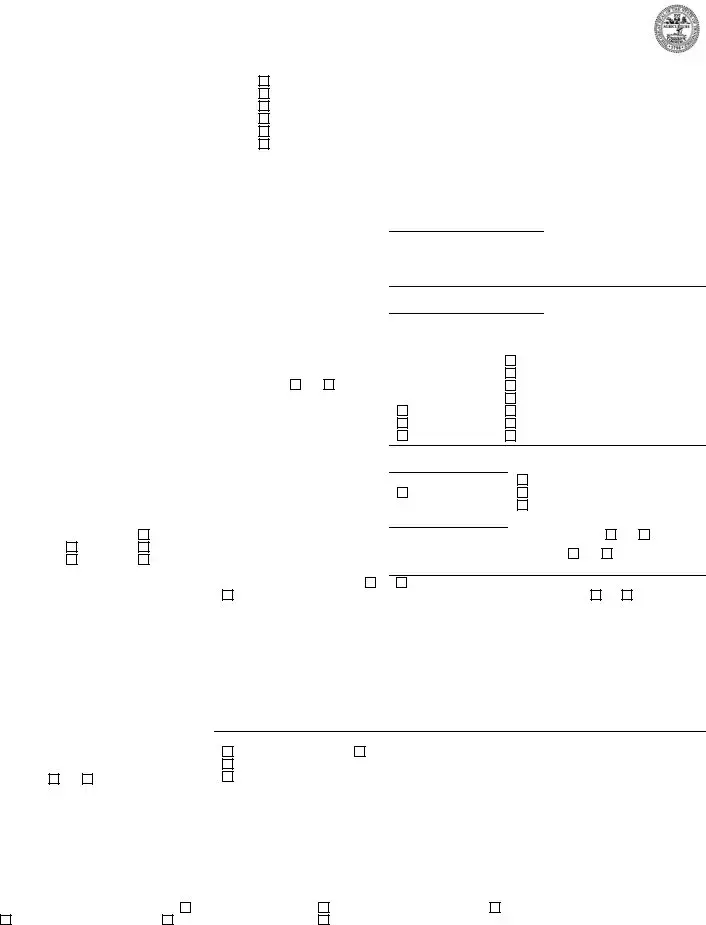The Tennessee First Report form is closely related to the OSHA Injury and Illness Incident Report Form 301. Both documents serve as initial reports for workplace injuries or illnesses, collecting comprehensive information about the incident, including details about the employee involved, the nature of their injury or illness, and how the incident occurred. While the Tennessee form is specific to the state’s Department of Labor requirement under workers' compensation laws, Form 301 is used nationally for OSHA compliance, demonstrating the uniform need across different jurisdictions to document workplace incidents accurately and thoroughly.
Similarly, the First Report of Injury (FROI) form used across various states for workers’ compensation claims shares numerous similarities with Tennessee’s First Report form. Like Tennessee’s form, the FROI captures essential data about workplace injuries or illnesses, including the injured employee’s details, the injury or illness specifics, and employer information. Both forms initiate the workers’ compensation process by documenting the occurrence and serving as a formal notice to insurance carriers, although specific information requirements can vary slightly from state to state.
The DWC-1 Claim Form in California acts as another counterpart, facilitating workers' compensation claims within that state. This form also collects detailed information regarding the injured employee, the date, time, and nature of the injury or illness, along with the employer's details. Both the DWC-1 and the Tennessee First Report serve the same purpose of kickstarting the claims process by providing a structured way to report workplace incidents to insurers and state agencies, albeit tailored to meet the legal requirements of their respective states.
The Workers' Compensation First Notice of Injury form in Florida is another document that bears a resemblance to the Tennessee First Report form. It is designed to capture initial information about a workplace injury or illness to file a claim. Both documents are integral to their state’s workers' compensation system, requiring details on the employee, the incident, and subsequent medical treatment. This parallel structure underscores their shared goal of ensuring that injured workers receive appropriate medical care and compensation benefits promptly.
The Accident Report Form used by employers to report vehicle accidents involving their employees is conceptually similar to the Tennessee First Report form, albeit focused on a specific type of incident. Both forms gather detailed incident descriptions, including information about the individuals involved and the extent of injuries or damage. The main difference lies in the Accident Report Form's emphasis on vehicle details and circumstances of the accident, illustrating the adaptability of incident reporting to various contexts.
The Workers' Compensation Notice of Employee Injury Form in New York represents another example of a document with analogous objectives and content to Tennessee's First Report. It provides a framework for reporting employee injuries to commence the workers’ compensation process. While tailored to New York State’s requirements, it similarly requires detailed incident, employer, and employee information, showcasing a universal approach to injury reporting within workers’ compensation systems.
Employer's Report of Industrial Injury used in Arizona is akin to the Tennessee First Report of Work Injury or Illness in its function and content. This form is necessary for reporting workplace injuries in Arizona, detailing the incident, employee information, and the employer's account of the event. Both forms play a crucial role in their respective states’ efforts to manage and support workers' compensation claims, highlighting the importance of initial incident reporting in facilitating the claims process.
The Incident Report Forms that schools use to document injuries or incidents involving students or staff mirror the Tennessee First Report form in structure and purpose. While targeted towards educational institutions rather than workplaces, these forms also aim to capture a comprehensive record of what happened, who was involved, and the outcome. This similarity underscores the universal need across different environments to have a structured method for reporting and documenting incidents to ensure appropriate responses and interventions.

